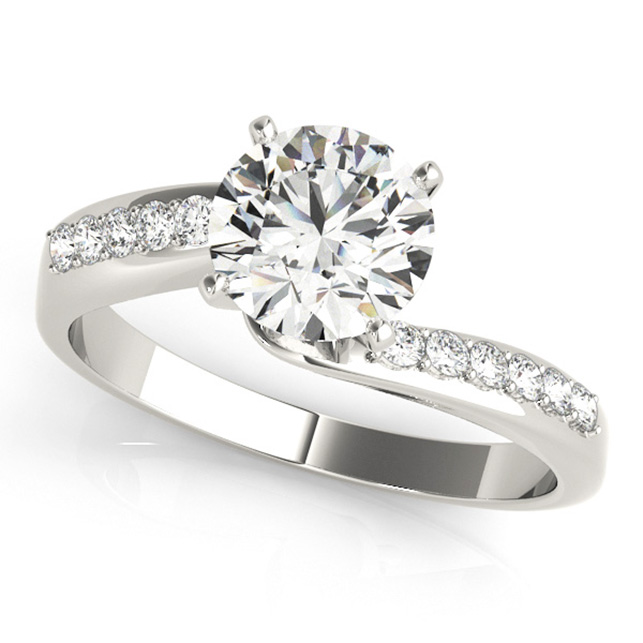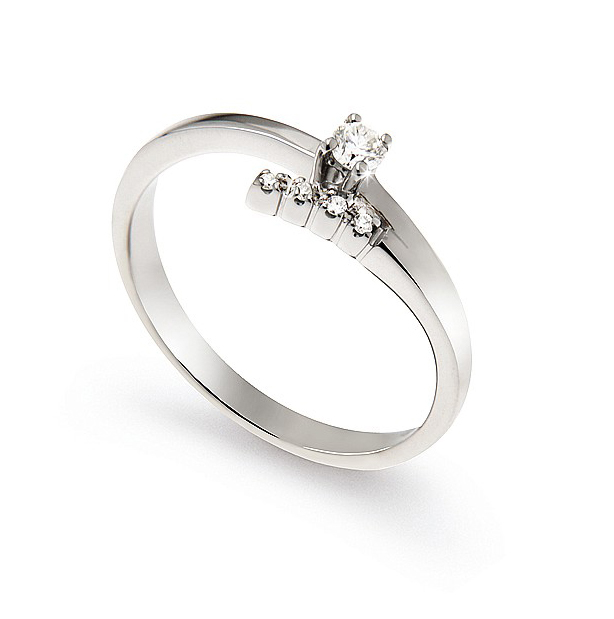- Free Shipping Over $75
- Easy 30-day returns
- Craftsmanship
- Signature Diamonds
- 360 Degrees
- Settings
Diamond Engagement Rings - Symmetry or Asymmetry?
Diamond Engagement Rings - Symmetry or Asymmetry?
Symmetrical and Asymmetrical Diamond Engagement Rings - Who Cares?One of the hottest topics among diamond engagement ring and jewelry designers is the notion of symmetry versus asymmetry, and how to leverage one or the other to render the latest and greatest engagement ring setting. While buyers may or may not realize the symmetry or asymmetry, when shopping for diamond engagement rings, this design element continues to serve as one of the most integral factors in the selection process. One of the most interesting aspects of symmetry in the context of engagement rings is that both buyers and sellers can be found along the entire spectrum - those who gravitate to asymmetry, those who want perfect symmetry and everywhere in between. On the one hand, many industry experts argue that perfect symmetry is the ticket to beauty. On the other hand, other experts counter this argument with the notion that perfect symmetry is an outdated ideal, and the modern buyers of the best online engagement rings are ready for new waves, trends and experiences. What is Perfect Symmetry? In looking at this diamond engagement ring setting, the design is an elegant curved shank bypass. The curved shank is produced in a symmetrical fashion, where each half of the design perfectly complements the other. The round cut side stones are also laid out in a symmetrical manner, where both sides of the shank complement each other. Most would agree that his is an attractively designed diamond engagement ring setting, but what happens when you eliminate the symmetry from the design? Would the resulting engagement ring setting be less beautiful, the same or better? We alluded to the answer to this question previously - both buyers and sellers are all over the spectrum on symmetry, and you are about to see why. What's There to Like About Asymmetrical Engagement Rings? This Italian diamond engagement ring setting is a contemporary solitaire concept with four round cut diamond accents. One could argue that this diamond setting is perfectly asymmetrical, as there is not even a hint of symmetry, no bypass and no side stones. As such, the typical buyer of a diamond engagement ring like this thrives on fashion-forward design elements, which do not conform to the safe, mainstream designs that we have grown accustomed to. Many would call this engagement ring beautiful, just as readily as the previous design, despite the substantial differences in its aesthetic makeup. And yet, would it be sensible to consider one of these diamond engagement rings prettier than the other? Are there any particular details about the design characteristics that would enable one to consider either setting as being preferable to the other? The answer is absolutely yes, and this is why both buyers and sellers are all over the symmetry versus asymmetry spectrum of some of the best diamond engagement rings. There just isn’t a single correct answer, as every person will have their preferences, their unique interpretation of beauty and ultimately their own ideas of what works best for them. What Else is Found on the Symmetry Versus Asymmetry Spectrum? For some buyers and sellers, committing to perfect symmetry or asymmetry is extreme. Some of us prefer to have the best of both worlds. After all, why choose one side of the spectrum or another, when there are diamond engagement rings out there which satisfy both cravings? This diamond setting design started out as a perfectly symmetrical split shank with a pear cut halo. However, the designer subsequently decided that something was missing, and added a crosband, overlapping the side stones on only one side of the split shank. In doing so, they transformed perfect symmetry into partial symmetry, thereby catering to buyers and sellers who want the best of both worlds. Remove the crossband and perfect symmetry is restored. Add the crossband back and the result is this contemporary diamond engagement ring for the fashion-forward buyer. Weren’t We Always Taught That Symmetry is the Key to Beauty?While there are theories out there which suggest that the people we find most attractive, are those whose facial features exhibit perfect symmetry, the world is changing and our tastes continue to evolve. If one were to make an argument that a higher percentage of buyers and sellers gravitate toward diamond engagement rings with perfect symmetry rather than asymmetry, perhaps this theory could hold water. However, art will be art, beauty will always be beautiful and designers will continue to innovate, to satisfy the everlasting cravings for novelty and innovation. For now, the debate of symmetrical versus asymmetrical diamond engagement rings will continue, and it is up to each of us to make this decision for ourselves. |












